
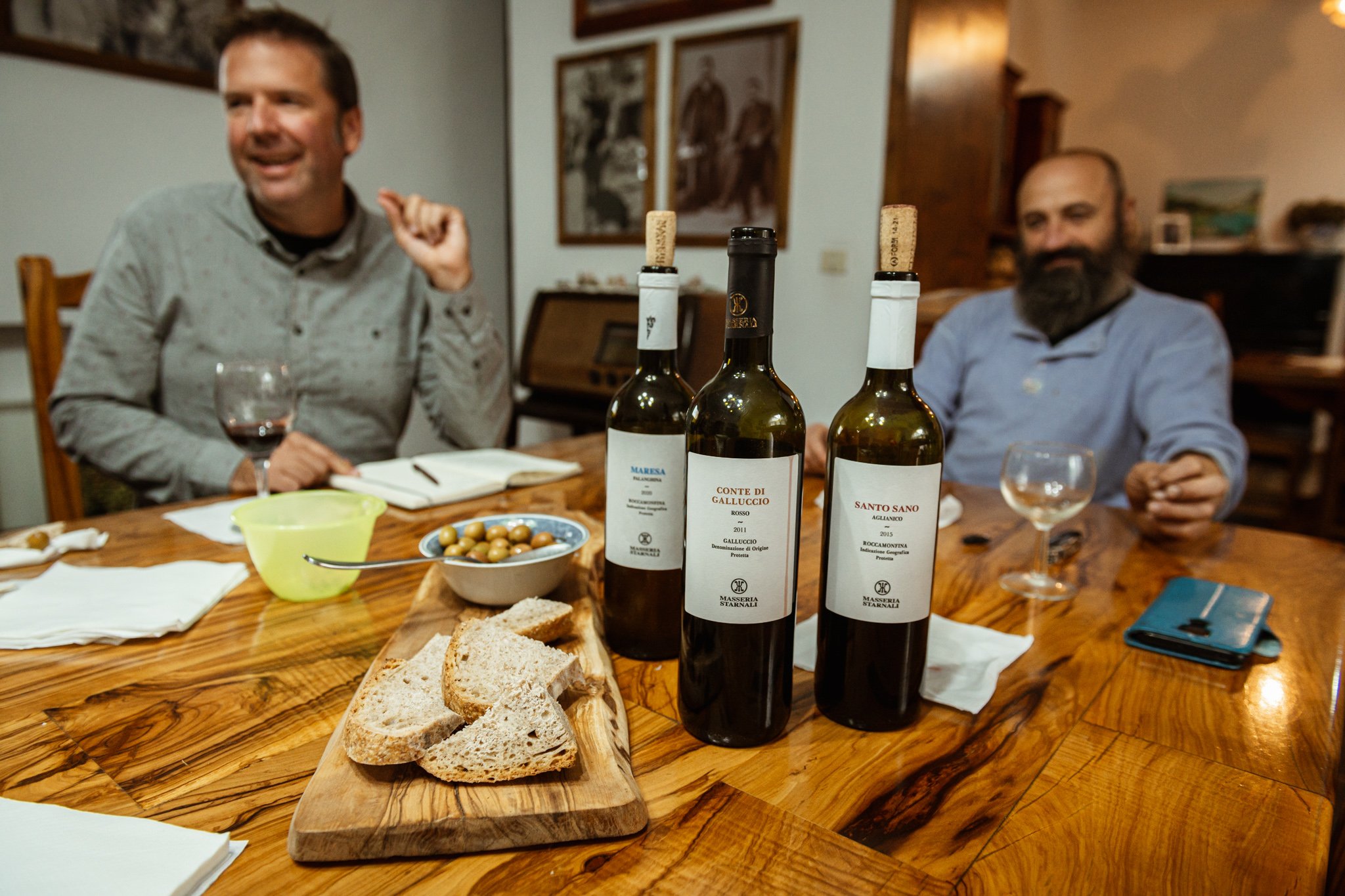
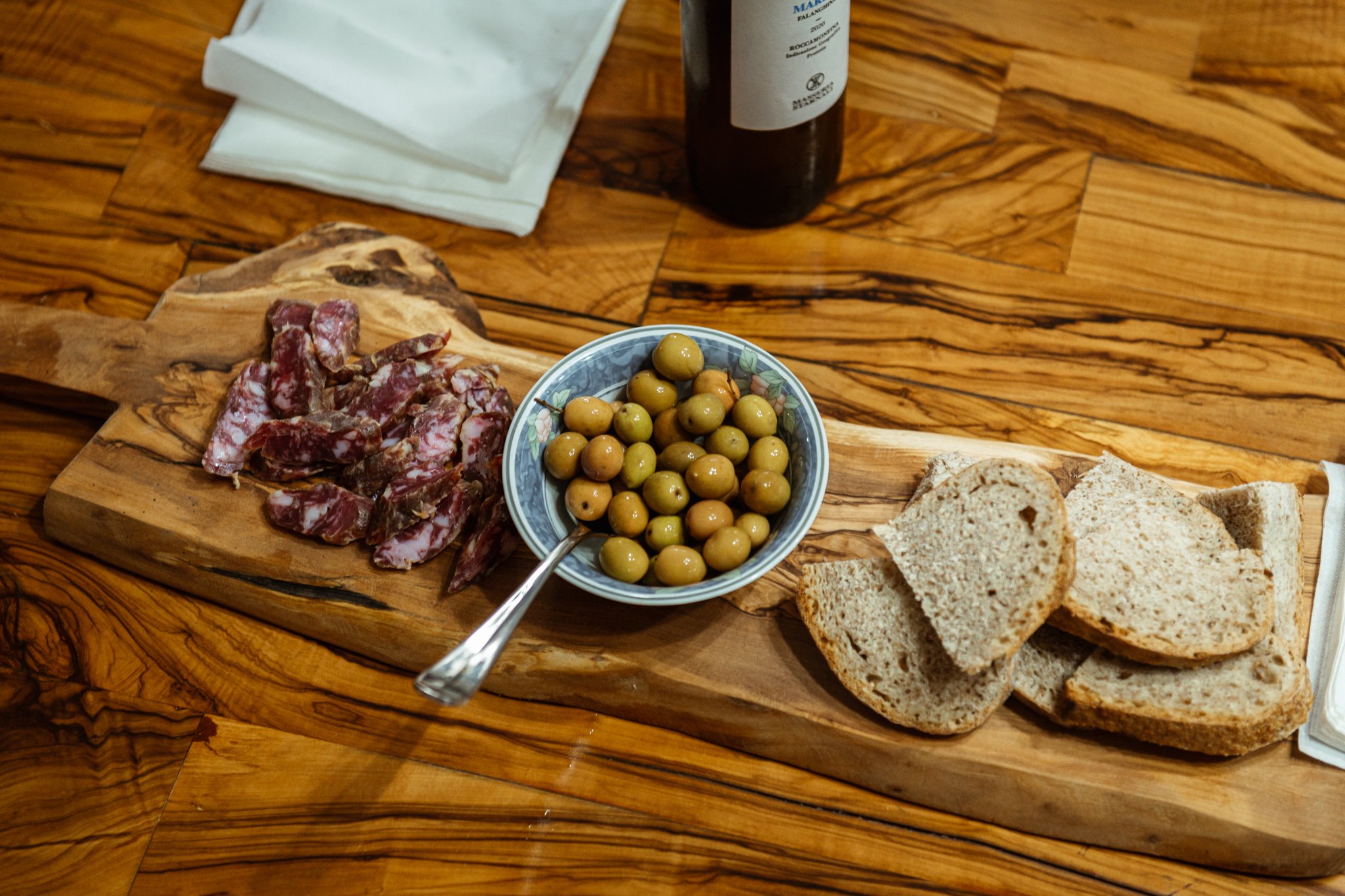
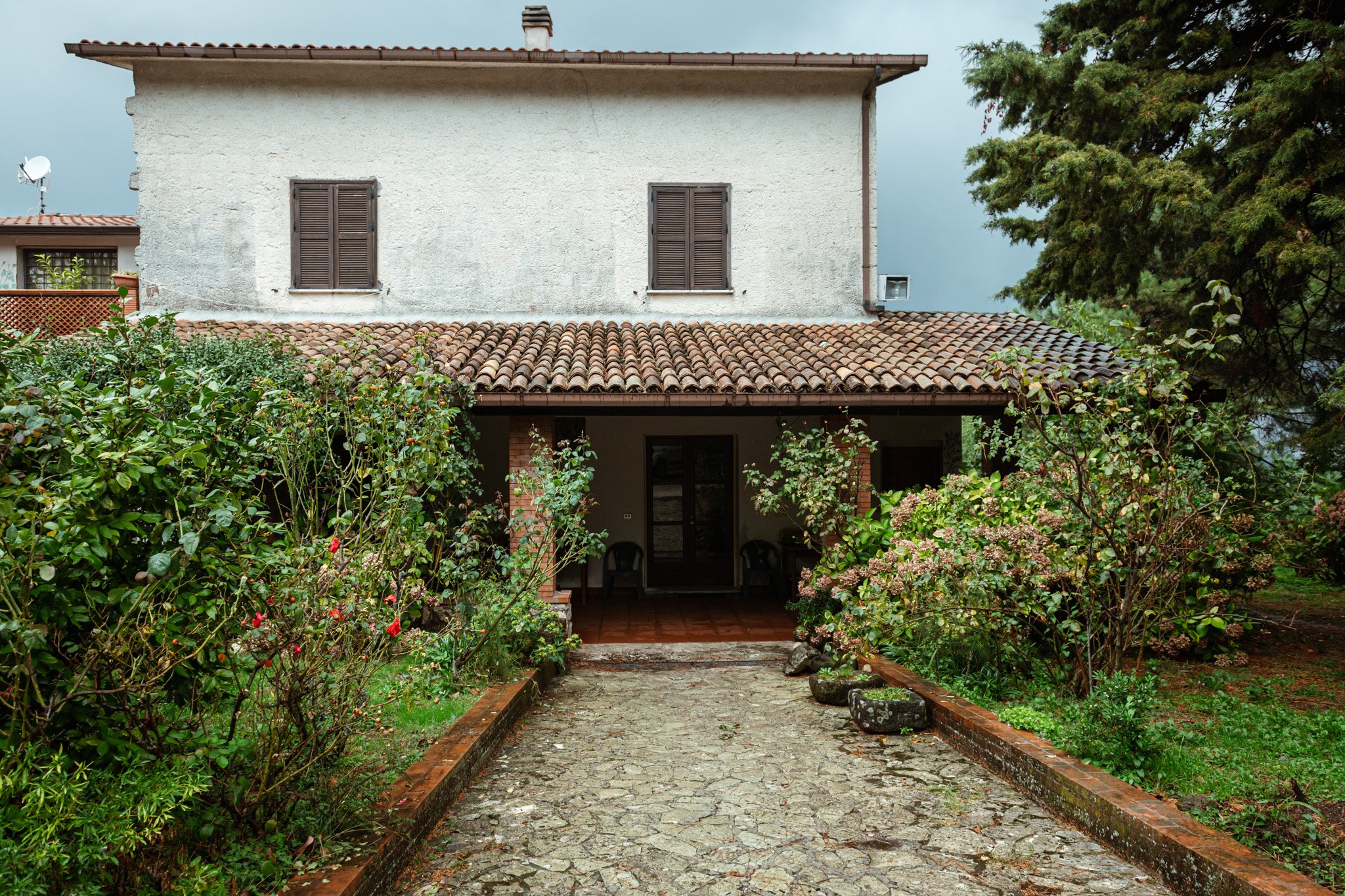
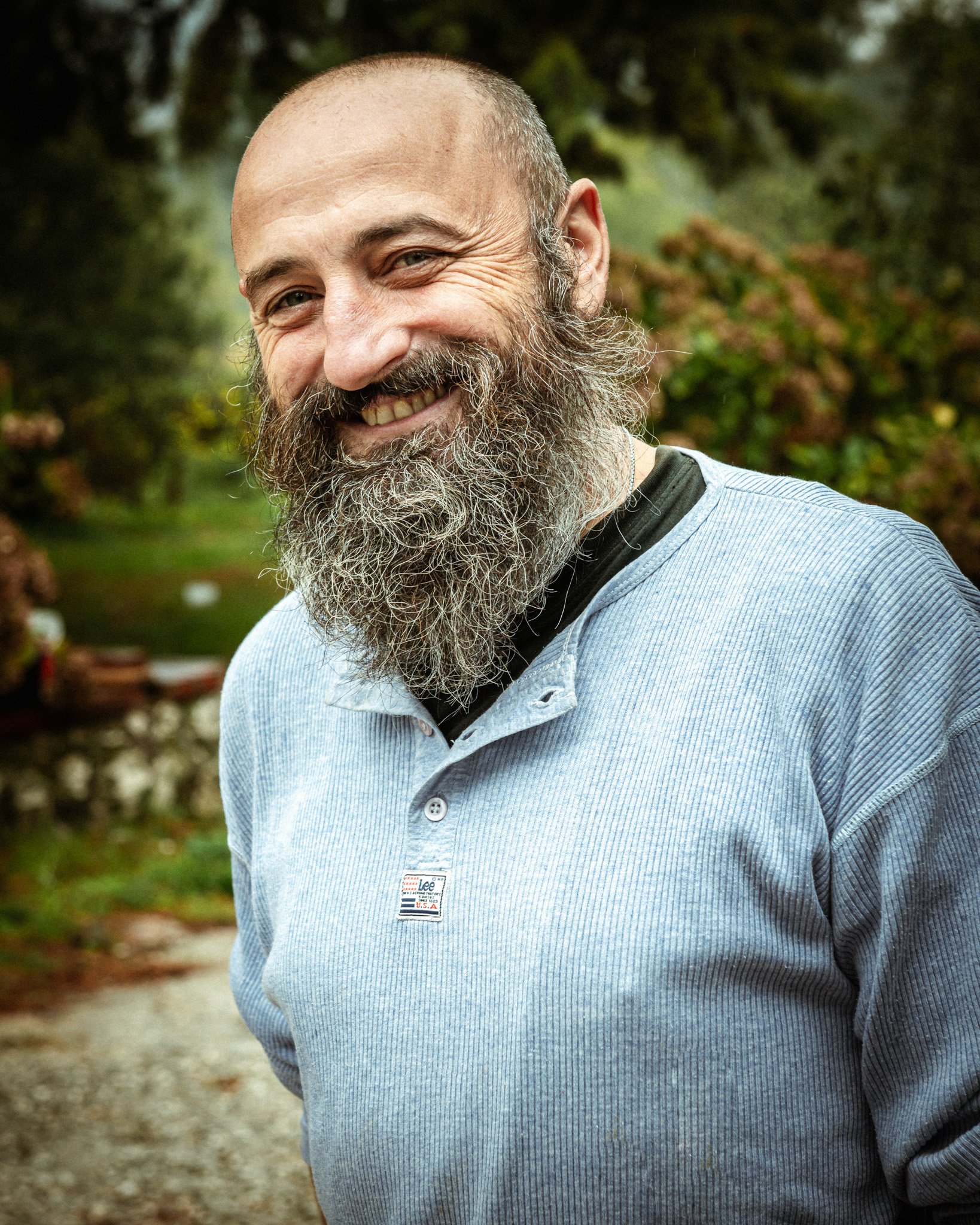
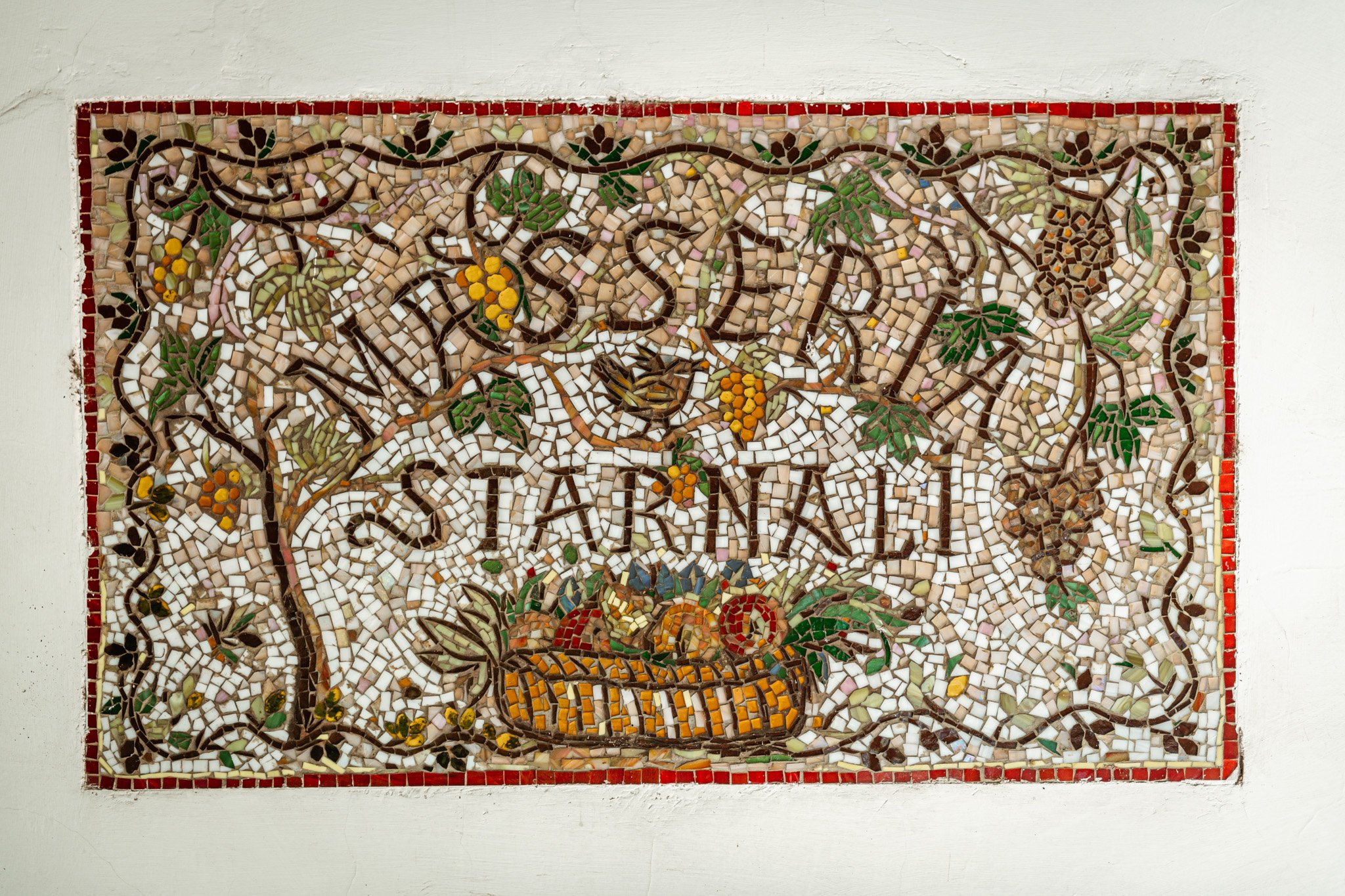
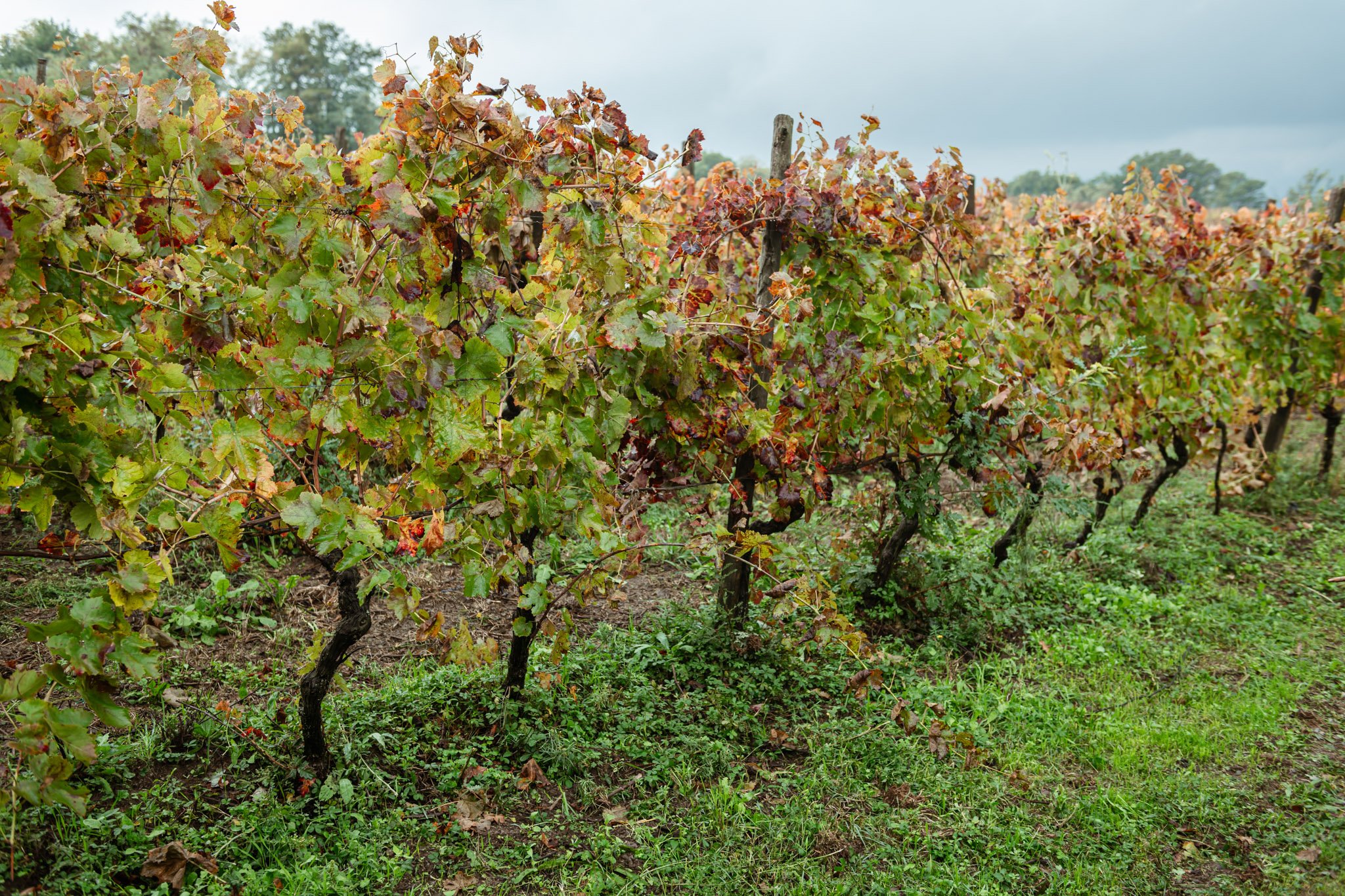
masseria starnali
Who: Luigi Ferrara
Where: Galluccio, Caserta (Campania, Italy)
What grapes: Aglianico, Piedirosso, Falanghina
Key fact: Luigi is making wine and harvesting chestnuts on the side of an ancient volcano.
Website: http://www.masseriastarnali.com/eng/wines.html
Instagram: @masseriastarnali
Masseria Starnalli “Maresa” Falanghina Roccamonfina IGP
Viticulture: Biodynamic
Soil type: Clay, volcanic
Elevation: 350m - 400m
Grapes: Falanghina
Method of fermentation: Harvested in the later part of October. Wild yeast only. Fermented in stainless steel at 16 degrees C. Aged for 6 months in stainless steel, and 4 months in bottle. From a harvest that Luigi described as “very normal.” The vineyard for this wine was planted 35 years ago. The wine is golden-yellow. Quite rich, but still fresh. The vines have a south-east sun exposure, and are exposed to sea breezes, critical for acid retention, and preventing mold/rot that can severely impact an organic farmer’s yield.
Masseria Starnalli “Santo Sano” Aglianico Roccamonfina IGP
Viticulture: Biodynamic
Soil type: Clay, volcanic
Elevation: 350m - 400m
Grapes: Aglianico 80% & Piedirosso 20%
Method of fermentation: Harvested in the later part of October. Wild yeasts start all the fermentations in Luigi’s cellar. Fermented and aged in stainless steel. Santo Sano is from a specific, slightly lower-elevation sub-parcel of Starnali’s vineyards. It is very good. Spicy, aromatic, quite lively.
Masseria Starnalli “Fer Lu” Aglianico Roccamonfina IGP
Viticulture: Biodynamic
Soil type: Clay, volcanic
Elevation: 350m - 400m
Grapes: Aglianico
Method of fermentation: Spontaneous fermentation, after a brief maceration on the skins. It’s a lighter style of Aglianico, for drinking young. Fer Lou is a new one to us! After four farm visits and numerous tastings in Italy and at home, I’ve learned to trust Luigi. His wines are solid.
Masseria Starnalli "Conte Di Galluccio" Galluccio Rosso DOP
Viticulture: Biodynamic
Soil type: Clay, volcanic
Elevation: 400 - 450m
Grapes: Aglianico (harvested the third week of October)
Method of fermentation: Spontaneous fermentation, 12-15 day maceration in stainless steel. Before bottling, it is aged in 400 liter oak casks for 12 months. Bottled and aged another 6 months.
“The top wine at Luigi’s farm is grown 400-450m above sea level in volcanic soils. Aged in large oak casks, it’s Aglianico molded by a terroir as distinct as Taurasi or Vulture. We are all still finding the great wines of southern Italy. There are places in Caserta province deserving of a much closer look. Since I can’t serve this with the salami that Luigi makes from the pigs he raises at Starnali, I’ll drink it with tender lamb shoulder, slow-cooked in north African spices.” — JM
Masseria Starnali is where Lazio and Molise and the Mediterranean all meet, or at least get close to each other. The sea is visible for a moment as you descend from the town of Roccamonfina, bisecting a forest of prized indigenous chestnut trees. Big chestnuts shade equally massive chunks of a ruined ancient stone road. The native chestnuts themselves are small, a fraction of the size of the invasive Japanese chestnuts that also thrive nearby. All species look alien. Their spiny orange pods litter the forest floor, alongside egg-shaped mushrooms, and other autumnal delights.
The air is in Roccamonfina is fresh. It flows from the sea. Funny that I can’t get wifi in Roccamonfina. The volcano is spiked with a massive telecommunications tower.
The whole farm is 40 hectares. Much of it is planted with olive trees. Unsurprisingly, they make organic olive oil. On my first visit, Luigi Ferrara’s mom Maria Theresa di Biasio pushed the stuff even more than her son’s wine! At Masseria Starnali there are also abundant cherries, small semi-wild black pigs, and a large garden that provided all the food for our first lunch together. There is also plenty of forest. Maria Theresa was the third generation of her family to farm in Roccamonfina. She named the property after a local bird, similar to a pheasant, that her husband used to hunt in the surrounding woodland.
The vines are 400-450m above sea level, in pure volcanic soil. It’s a very brittle, grey lava. Wonderful for vines.
I tasted the wines for the first time in Italy (I’d tried samples at home in Durham) just hours after landing in Rome, marveling a little that a jet would take me directly to this exotic place from ho hum Charlotte. In the airport, I met a WNBA player who was defecting to the Italian league for seven months. She asked my opinion of Napoli. I told her it was chaotic, and that she’d have an awesome time. She had the two largest suitcases I’ve ever seen: 70+lbs. each. She’s spent seasons in Israel and Turkey, and was really friendly. People can just be nice to each other: even strangers. Kindness. It’s simple, and it works.
Two easy hours on the autostrada del sole, pointed direction Napoli, and I was winding up mountains, past Piedirosso and Aglianico vines. This misty corner of Campania was new to me. It felt remote. It was pretty in a different way than coastal Campania, or the farms I’d seen closer to the south.
Luckily for lovers of Aglianico, Luigi releases his reds several years after harvest. It’s a grape that rewards patience. At my first encounter, we tasted bottles from 2010 and 2011 at lunch, and then a 2009 in the small cellar next to the vineyards. A rooster crowed in the distance while we tasted in the converted barn.
Along with the very appealing natural wines, lunch had been a welcome sight. I was running on fumes. The last pieces of leftover Toro pizza, repurposed as pre-travel breakfast, had gotten me to Campania. I’d purchased an autostrada baguette, but was loathe to consume it. Carbs of last resort.
Luigi’s children Giuliano and Giovanna played with a puzzle under the table. They pretended to be animals while we ate penne with a pomodoro and torn basil sauce, from Luigi’s garden. Then a salad with ripe peppers and tomatoes and lettuce. And finally fried potatoes, and cutlets of pork with chestnuts. All grown on the farm.
Luigi’s dog is friendly. A little agro with the head scratching, but otherwise chill. A shepherd mutt.
Maria Theresa was irrepressible. Much of her family had moved to New York, and became firemen. Some became doctors. After preparing lunch, she left with two local women, to harvest chestnuts. Hours later they returned with an amazing haul: multiple full sacks, probably 50+ pounds of chestnuts in each bag! While Maria Theresa was harvesting, Luigi and I went for a stroll through his vineyards. We passed rosa selvatica, wild fennel, and thyme. At Starnali, every other vine row is plowed. The alternate ones have a mix of beans, herbs, wild broccoli, rape, and nitrogen-fixing legumes. Most of the soil is pure volcanic rock. Some Falanghina vines are planted in terra rosa clay-limestone. One small parcel grows in sandy/alluvial soils, a reminder that we are close to the sea.
The older, high-trellised (tendone) parcels of red grapes were planted in 1976. The newer vines are from the 1990’s, and follow more modern, high-density planting methods, with roughly a meter between each plant.
I’m so glad that on my first visit I stayed with the Ferraras for an extra day. I have indelible memories of them from that time. The farm is tranquil. There’s nothing to do in Roccamonfina other than farm, and roam the forest. I love it. Their garden is just my kind of outdoor space. Overgrown, with plenty of places to hide on stone slabs or rough-hewn benches and read, while pigs grunt and dogs amble in the distance. The evening air was cool, the sunset a splash of brilliant orange.
I returned in 2017, and again in 2021. In between these encounters, I sent emissaries from Piedmont Wine Imports, to let Luigi know we still loved his wines. One day we’d work together.
Last year was a bittersweet visit. Maria Teresesa was gone. Luigi and his wife were gracious, wonderful hosts, of course. We ate fresh salami made from Luigi’s pigs. The wines were better than ever. Following Luigi’s dog as he careened through rows of Aglianico in pursuit of wildlife, I knew it was time to start our collaboration. I wish there had been time for another conversation with Maria. I loved looking at the sepia photos hanging in the farmhouse dining room, and listening to Maria’s vivid descriptions, in mixed Italian and English, of multiple generations of their ancestors. A few shared meals, a handful of quiet visits to their farm, and these people had started to feel like family.




